Student Alumni
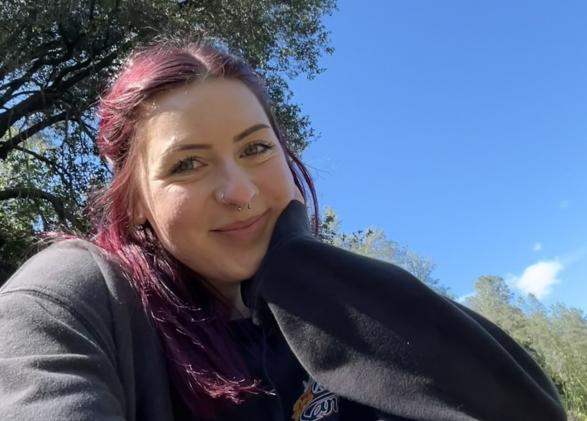
Staff Spotlight: Sam Matlock
Sam Matlock (she/they), former NatureBridge student and current Coastal Camp staff member, has come full circle in their journey with NatureBridge. Growing up in the heart of the Sierra Nevada mountains in Mariposa, CA, Sam has always had a passion for spending time outdoors and for exploring the natural world. Their eighth grade class trip to NatureBridge Yosemite planted a seed for what a career in outdoor education could look like. Now a Coastal Camp counselor spending the summer at NatureBridge Golden Gate in the Marin Headlands, Sam marvels at the amazing ways in which their path has led them back to NatureBridge. Sam’s story is an inspiring testament to the lasting impact NatureBridge makes on its students and educators alike.
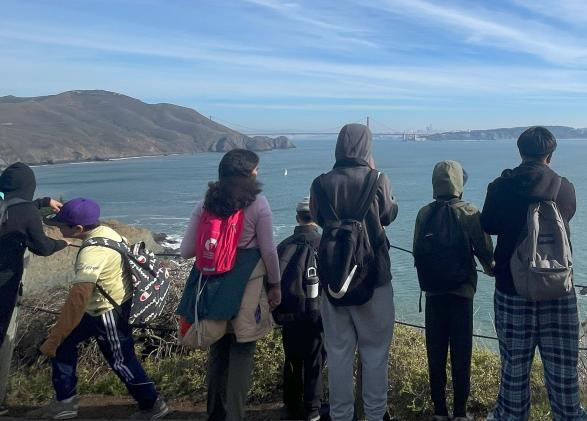
NatureBridge: A Kid's Point of View
Ever since I heard about the amazing experience known as NatureBridge from my sibling, I dreamed about the day it would finally be my turn. After watching them go off and seeing how much fun they had I’ve been even more ecstatic. Finally I was old enough and my dream was coming true.
Staff Spotlight: Dylan Meek
“I don’t know if I’d have such a keen interest in what I do now” without experiencing NatureBridge programs as a middle schooler, says current NatureBridge staff member Dylan Meek. As a seventh grader, Dylan and her classmates from Southern California attended an environmental science program at Yosemite Institute (known today as NatureBridge Yosemite). That trip represented Dylan’s first visit to a national park and her first exposure to the field of outdoor education. Now on staff as the Lab Steward at NatureBridge Golden Gate, Dylan ensures that the environmental science educators have everything they need “to get the most out of the lab spaces” on campus.
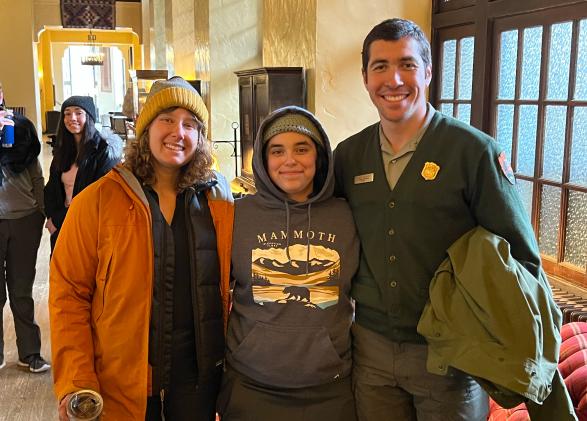
2024 Student of the Year: Kai Diaz
At NatureBridge, we celebrate the stewards of today and foster the development of the stewards of tomorrow, working to inspire environmental stewardship in all our participants. Our goal is to motivate our students to make waves and be changemakers in their communities and for our planet.
Each year, NatureBridge honors a student who has demonstrated leadership, growth and a commitment to protecting our natural world as a result of their participation in a NatureBridge program. This year’s honoree will be recognized and will speak at An Evening Outside with NatureBridge on Thursday, May 16 at our Golden Gate campus.
We are thrilled to announce our 2024 Student of the Year: Kai Diaz.
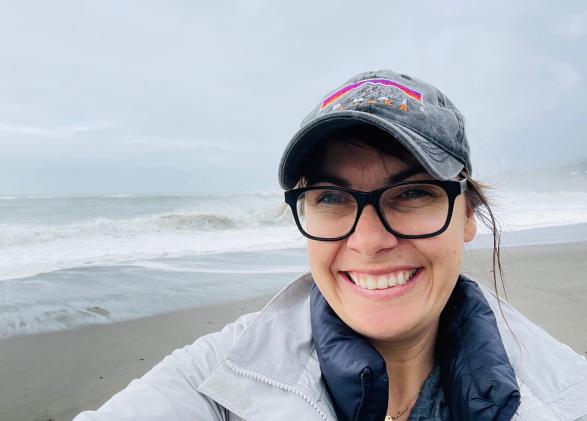
Alumni Spotlight: Anna Kennedy
Growing up in western Sonoma County, CA, Anna Kennedy spent much of her childhood exploring the outdoors. But it wasn’t until her sixth grade class visited NatureBridge’s Golden Gate campus and her group embarked on their challenge hike in the Marin Headlands that Anna “had this moment of realizing I enjoy hiking!” That experience, coupled with a memorable night walk on the beach, set Anna on a path of discovery, study, and fieldwork that ultimately brought her back to NatureBridge Golden Gate in Fall 2023—as a seventh grade teacher with students of her own.
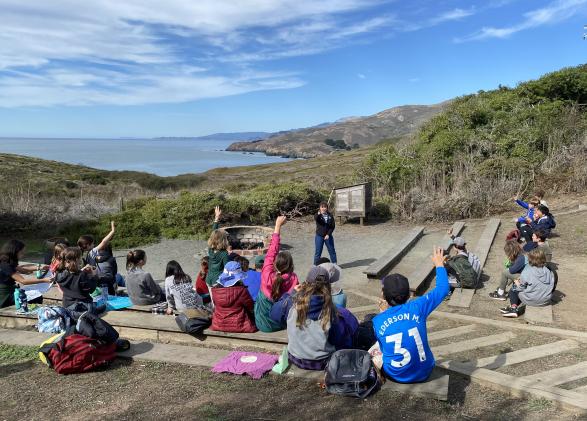
Three Generations of Outdoor Learning
"Full circle." That’s the phrase that kept running through my mind as I drove into the Marin Headlands, eagerly anticipating the smiles I expected to see from the students I was tasked with meeting at NatureBridge’s Golden Gate campus. I had signed up as a driver to bring a group of fifth graders back to school after three days and two nights learning and playing together on the coast. The trip was a rite of passage, a cornerstone experience for their grade. As I came upon the group doing their final wrap-up and graduation ceremony on wooden benches overlooking the Pacific Ocean, there was one smile in particular I was looking for. “Mama! I love NatureBridge!” I heard as I was tackled by my ten-year-old in a huge hug. Growing up in a family that loves camping and regularly takes hikes in the East Bay Hills, this wasn’t a total surprise, but as a former NatureBridge staff member for nearly 10 years and a past participant myself, I couldn’t help but take a breath of relief.
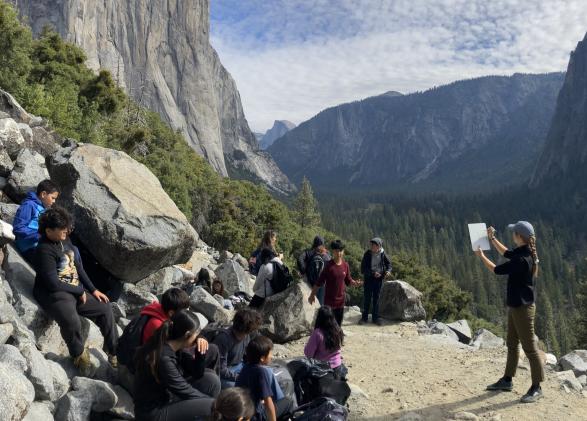
Staff Spotlight: Amelia Otto Cutting
“I didn’t remember that I remembered this much until I got here and then I was like, wait, I know I did this!” For current Environmental Science Educator Amelia Otto Cutting, leading student groups at NatureBridge Yosemite is a dream come true—as well as a bit of déjà vu. Although she’d been visiting Yosemite National Park with her family for her “whole life,” Amelia's first visit to NatureBridge came via Girl Scouts, which organized a summer camp that included five days at Yosemite Institute (now known as NatureBridge Yosemite) in 2009. Eleven-year-old Amelia explored the Spider Caves, climbed Lembert Dome, marveled at the Tuolumne Grove and hiked up to the Crane Flat fire lookout (“They even let us in the helicopter!” she recalls with excitement). Amelia’s favorite part of returning to Yosemite as an educator—after having experienced NatureBridge programming as a student—is “taking kids out into the field…and sharing my love of nature with them.”
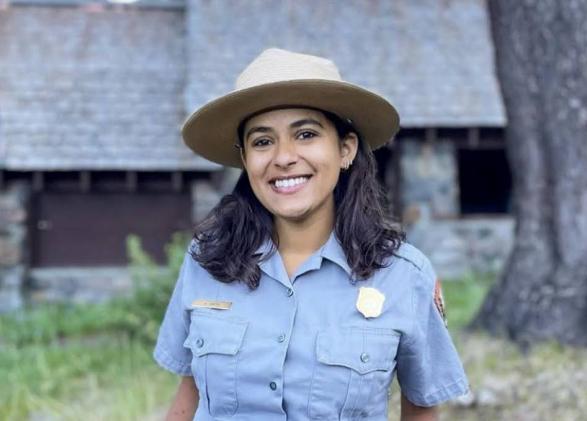
Rooted in Nature: How Anya Gupta Found Her Path with NatureBridge
"It’s pretty impressive to say that I’ve been obsessed with a place since I was 13—thanks to the NatureBridge program!” For alum Anya Gupta, that place is Yosemite National Park. Starting with her eighth grade trip to NatureBridge Yosemite in 2014—a trip that Anya declares “changed my life”—Anya has been pursuing paths that would allow her to return to Yosemite to explore, discover and serve. Even when she is physically distant from the park (as she is right now while completing dual bachelor’s degrees in Earth Climate Science and Environmental Science at Duke University), Anya keeps Yosemite close to her heart.
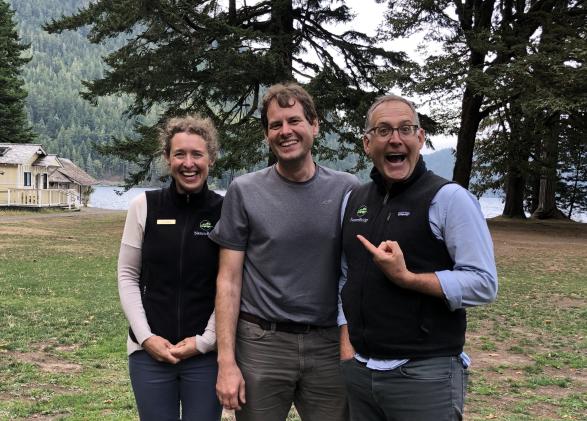
Alumni Spotlight: Ryan Hunt
We were fortunate to reconnect recently with NatureBridge Golden Gate (formerly The Headlands Institute) alum Ryan Hunt at our Olympic campus. During his visit to Olympic, Ryan and his fellow team members met with NatureBridge CEO and President Phil Kilbridge, Olympic Campus Director Jen Kidder, National Park Service staff and members of our Olympic staff. They toured the campus and learned how NatureBridge has evolved since Ryan’s time as a student at The Headlands Institute in 1991. Ryan shared about his NatureBridge program where he learned about marine life and ecosystems in Golden Gate National Recreation Area, an experience he termed “seminal” to who he is today. Currently, Ryan serves as a senior staff member on the US Senate Appropriations Committee where he recommends to the Senate how funds should be spent, particularly in relation to the preservation of outdoor spaces.